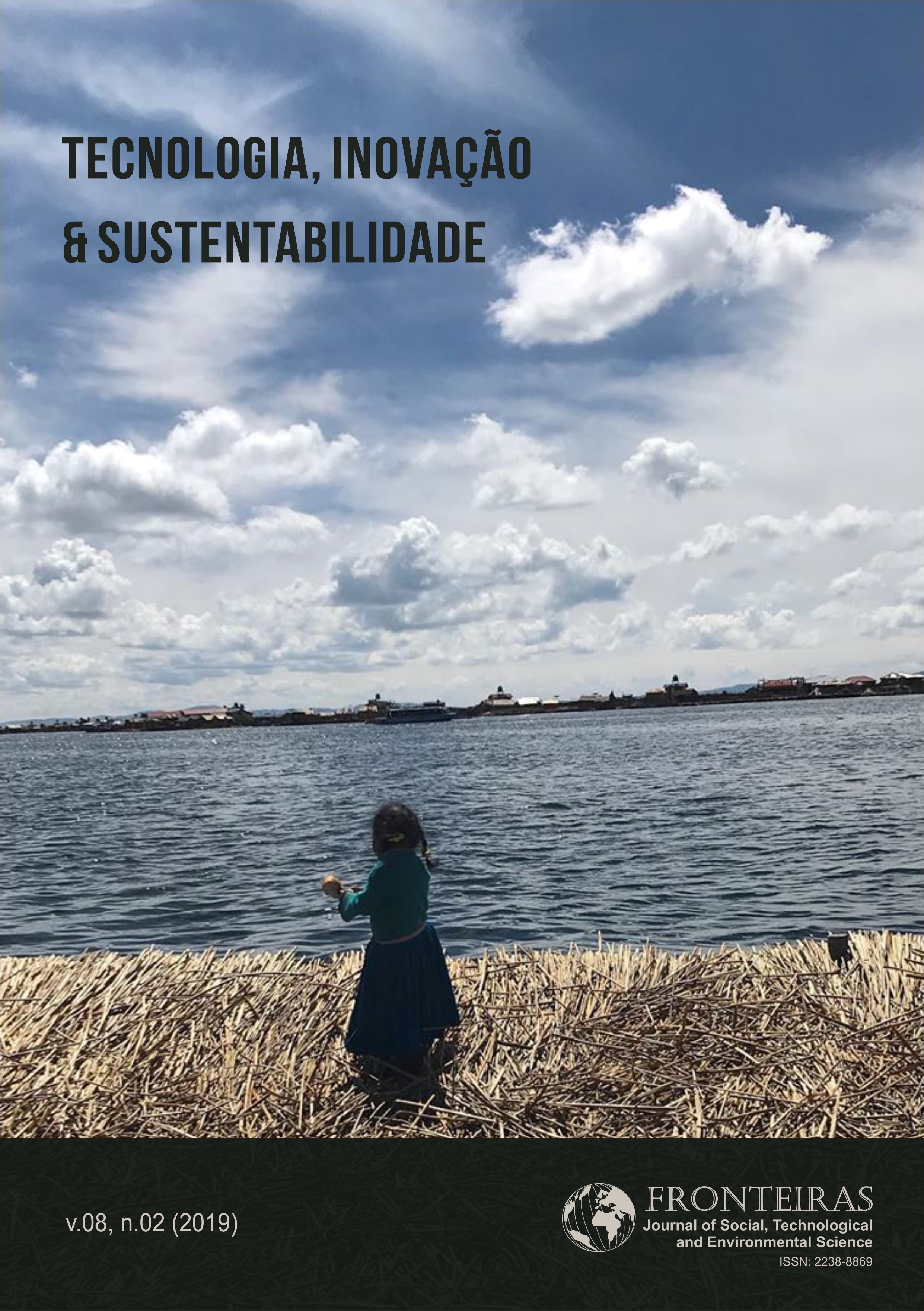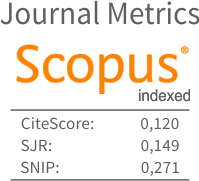Social-Ecological System constraints of Protected Areas. A case study of Mexican protected forests
DOI:
https://doi.org/10.21664/2238-8869.2019v8i2.p227-244Keywords:
Conservation Policy, Sustainable Management, Protected Areas, Resource SystemsAbstract
Protected Areas are worldwide accepted as conservation policy instrument. However, effectiveness of this instrument for sustainability management of protected resources is still problematic. It is in this context this paper investigates Social-Ecological System constraints which lead to unsuccessful situations in protected forests in Mexico. To achieve this objective, a methodology of E. Ostrom SES framework to carry out meta-analysis of case studies of Mexican forests is used. The results show that constraints are imbedded into attributes of governance of these resources by local communities through a set of variables whose patterns of interactions lead to successful or unsuccessful situations. These variables are variables characterizing governance system and variables characterizing actors’ system. The interactions of these variables lead to successful situations in case studies in which local community members highly participate in governance system.
References
Aguascalientes-IMAE 2006. Estudio Técnico Justificativo: Área de Protección del Águila Real (Aquila chrysaetos) de la Serranía de Juan Grande en el Ejido Palo Alto, municipio de El Llano, Aguascalientes, México. IMAE (Instituto del Medio Ambiente), Aguascalientes.
Aguascalientes-IMAE 2010a. Área de Protección del Águila Real [Golden Eagle Protection Area]. State Ministry of the Environment (IMAE), Aguascalientes. Available From: http://www.aguascalientes.gob.mx/ imae/recursosbioticos/aguila.aspx.
Aguascalientes-IMAE 2010b. Monitoreo Biológica [Biological Monitoring]. State Ministry of the Environment (IMAE), Aguascalientes. Available From: http://www.aguascalientes.gob.mx/imae/recursosbioticos/ monbio.aspx.
Andam KS, Ferrar PJ, Pfaff A, Sanchez-Azofeifa GA, Robalino JA 2008. Measuring the effectiveness of protected area networks in reducing deforestation. The National Academy of Sciences of the USA, 105(42):16089-16094.
Anderies JM, Janssen MA, Ostrom E 2004. A Framework to Analyze the Robustness of Social-ecological Systems from an Institutional Perspective. Ecology and Society, 9(1):1-18.
Arroyo-Rodrıguez V, Aguirre A, Benıtez-Malvido J, Mandujano S 2007. Impact of rain forest fragmentation on the population size of a structurally important palm species: Astrocaryum mexicanum at Los Tuxtlas, Mexico. Biological Conservation, 138(1-2):198-206.
Arroyo-Rodriguez V, Mandujano S 2006. The importance of tropical rain forest fragments to the conservation of plant species diversity in Los Tuxtlas, Mexico. Biodiversity and Conservation, 15(13):4159-4179.
Berget C, Duran E, Bray DB 2015. Participatory Restoration of Degraded Agricultural Areas Invaded by Bracken Fern (Pteridium aquilinum) and Conservation in the Chinantla Region, Oaxaca, Mexico. Human Ecology, 43(4):547-558.
Borenstein M, Hedges LV, Higgins JPT, Rothstein HR 2009. Introduction to Meta-Analysis. John Wiley & Sons, United Kingdom.
Bost J 2014. Persea schiedeana: A High Oil “Cinderella Species” Fruit with Potential for Tropical Agroforestry Systems. Sustainability, 6:99-111.
Bray DB, Duran E, Anta S, Martín GJ, Mandragón F 2008. A new conservation and Develpoment Frontier: Community Protected Areas in Oaxaca, Mexico. Current Conservation, 2.2:7-9.
Bray DB, Duran E, Molina O 2012. Beyond harvests in the commons: multi-scale governance and turbulence in indigenous/community conserved areas in Oaxaca, Mexico. International Journal of the Commons, 6(2):151-178.
Brooks TM, da Fonseca GAB, Rodrigues ASL 2004. Protected Areas and Species. Conservation Biology, 18(03):616-618.
Cámara ABS, Ramírez JS, Sierra CLJ, Ortega-Rubio A 2014. Conservation in the Sierra la Laguna Biosphere Reserve, Baja California Sur: achievements and challenges. Investigación y Ciencia de la Universidad Autónoma de Aguascalientes, 60:78-84.
Coetzee BWT 2017. Evaluating the ecological performance of protected areas. Biodiversity and Conservation, 26(1):231-236.
CONANP 2006. Certificado del Área de Protección del Águila Real de la Serranía de Juan Grande [Certificate of the Serrania de Juan Grande Golden Eagle Protection Area]. National Commission on Natural Protected Areas (CONANP) Certificado -76/2006. Available From: http://www.aguascalientes.gob.mx/.
CONANP 2008. Programa de Acción para la Conservación de la Especie: Águila real (Aquila chrysatoes) [Program of Action for the Conservation of the Species: Golden eagle]. National Commission on Natural Protected Areas (CONANP).
CONANP 2009. Ficha de Identificación: Aguila Real [Identification Sheet: Golden Eagle]. National Commission on Natural Protected Areas (CONANP). Available From: http://www.conanp.gob.mx/pdf_especies/aguila_real.pdf.
Cox M 2014. The SESMAD project. the Digital Library of the Commons.
Cumming GS 2014. Chapter 1. Theoretical Frameworks for the Analysis of Social-Ecological Systems. In S Sakai, C Umetsu (eds.). Social-Ecological Systems in Transition. Springer, Tokyo / Heidelberg / New York / Dordrecht / London, p. 3-21. Available From: http://www.springer.com/series/10124.
Curran LM, Trigg SN, MacDonald AK, Astiani D, Hardiono YM, Siregar P, Caniago I, Kasischke E 2004. Lowland Forest Loss in Protected Areas of Indonesian Borneo. Science, 303(5660):1000-1003.
Durand L, Lazos E 2004. Colonization and tropical deforestation in the Sierra Santa Marta, Southern Mexico. Environmental Conservation, 31(1):11-21.
Durand L, Lazos E 2008. The Local Perception of Tropical Deforestation and its Relation to Conservation Policies in Los Tuxtlas Biosphere Reserve, Mexico. Human Ecology, 36:383-394.
Frias G, Meredith T 2004. Resistance to Conservation in the Land of Zapata. Presented at “The Commons in an Age of Global Transition: Challenges, Risks and Opportunities”. In Tenth Conference of the International Association for the Study of Common Property, Oaxaca, Mexico.
Gallina S 2012. Is Sustainablity Possible in Protected Areas in Mexico? Deer as an Example of a Renewable Resource. Sustainability, 4(10):2366-2376.
Hoag DL, Skold MD 1996. The relationship between conservation and sustainability. Journal of Soil and Water Conservation, 51(4):292-295.
Ibarra JT, Barreau A, Del Campo C, Camacho CI, Martin GJ, McCandless SR 2011. When Formal and Market-Based Conservation Mechanisms Disrupt Food Sovereignty: Impacts of Community Conservation and Payments for Environmental Services on an Indigenous Community of Oaxaca, Mexico. International Forestry Review, 13(3):318-337.
Jepson PR, Caldecott B, Schmittt SF, Carvalho SHC, Correia RA, Gamarra N, Bragagnolo C, Malhado ACM, Ladle RJ 2017. Protected area asset stewardship. Biological Conservation, 212(A):183-190.
Joppa LN, Loarie SR, Pimm SL 2008. On the protection of ‘‘protected areas’’. Proceedings of the National Academy of Sciences of the USA, 105(18):6673-6678.
Laurance WF, Useche DC, Rendeiro J, Kalka M, Bradshaw CJA, Sloan SP, Laurance SG, Campbell M, Abernethy K, Alvarez P, et al. 2012. Averting biodiversity collapse in tropical forest protected areas. Nature, 489:290-294.
Mendez-Lopez ME, García-Frapoll E, Pritchard DJ, Sánchez González MC, Ruiz-Mallén I, Porter-Bolland L, Reyes-Garcia V 2014. Local participation in biodiversity conservation initiatives: A comparative analysis of different models in South East Mexico. Journal of Environmental Management, 145:321-329.
Moldovan L 2014. Protected areas in calimani mountains. Academica Science Journal, 2(5):15-22.
Negrete-Yankelevich S, Porter-Bolland L, Blanco-Rosas JL, Barois I 2013. Historical Roots of the Spatial, Temporal, and Diversity Scales of Agricultural Decision-Making in Sierra de Santa Marta, Los Tuxtlas. Environmental Management, 52(1):45-60.
Nieratka LR, Bray DB, Mozumder P 2015. Can Payments for Environmental Services Strengthen Social Capital, Encourage Distributional Equity, and Reduce Poverty?. Conservation and Society, 13(4):345-355.
Ostrom E 1990. Governing the commons. The evolution of institutions for collective action. Cambridge University Press, Cambridge, 298 pp.
Ostrom E 2007. A Diagnostic approach for going beyond panaceas. Proceedings of the National Academy of Sciences of the USA, 104(39):15181-15187.
Ostrom E 2009. A General Framework for Analyzing Sustainability of Social-Ecological Systems. Science, 325(5939):419-422.
Paré L, García H 2015. Reservas campesinas en la región de los Tuxtlas y la Sierra de Santa Marta. Experiencias comunitarias para una política integral de conservación en áreas protegidas. Available From: http://anea.org.mx/docs/Garcia-ArtResCampeStaMarta.pdf.
Pfaff A, Santiago-Ávila F, Joppa L 2017. Evolving Protected-Area Impacts in Mexico: Political Shifts as Suggested by Impact Evaluations. Forests, 8(17):[about 14 pages].
Pigott TD 2012. Advances in Meta-Analysis. Springer, New York / Dordrecht / Heidelberg / London.
Porter-Bolland L, Ellis EA, Guariguata MR, Ruiz-Mallén I, Negrete-Yankelevich S, Reyes-García V 2012. Community managed forests and forest protected areas: An assessment of their conservation effectiveness across the tropics. Forest Ecology and Management, 268:6-17.
Reinius SW, Fredman P 2007. Protected Areas as attractions. Annals of Tourism Research, 34(4):839-854.
Rodrıguez-Jorquera IA, Siroski P, Espejo W, Nimptsch J, Choueri RB, Moraga CA, Mora M, Toor GS 2017. Latin American Protected Areas: Protected from Chemical Pollution?. Integrated Environmental Assessment and Management, 13(2):360-370.
SEMARNAT 2002. Norma Oficial Mexicana NOM-059-SEMARNAT-2001 Protección Ambiental - Especies Nativas de México de Flora y Fauna Silvestres - lista de species en riesgo.
SESMAD 2014. Social-Ecological Systems Meta-Analysis Database: Background and Research Methods. [Accessed 2014;2015;2016]. Available from: http://sesmad.dartmouth.edu..
Van den Bergh JC, Button KJ, Nijkamp P, Pepping GC 1997. Meta-Analysis in Environmental Economics. 12.ed. Springer, Netherlands.
Watson JEM, Darling ES, Venter O, Maron M, Walston J, Possingham HP, Dudley N, Hockings M, Barnes M, Brooks TM 2016. Bolder science needed now for protected areas. Conservation Biology, 30(2): 243-248.
Watson JEM, Dudley N, Segan DB, Hockings M 2014. The perfromance and potential of protected areas. Nature, 515:67-73.
Weaver DB, Lawton LJ 2017. A new visitation paradigm for protected areas. Tourism Management, 60:140-146.
Downloads
Published
How to Cite
Issue
Section
License
This journal offers immediate free access to its content, following the principle that providing free scientific knowledge to the public, we provides greater global democratization of knowledge.
As of the publication in the journal the authors have copyright and publication rights of their articles without restrictions.
The Revista Fronteiras: Journal of Social, Technological and Environmental Science follows the legal precepts of the Creative Commons - Attribution-NonCommercial-ShareAlike 4.0 International. 


